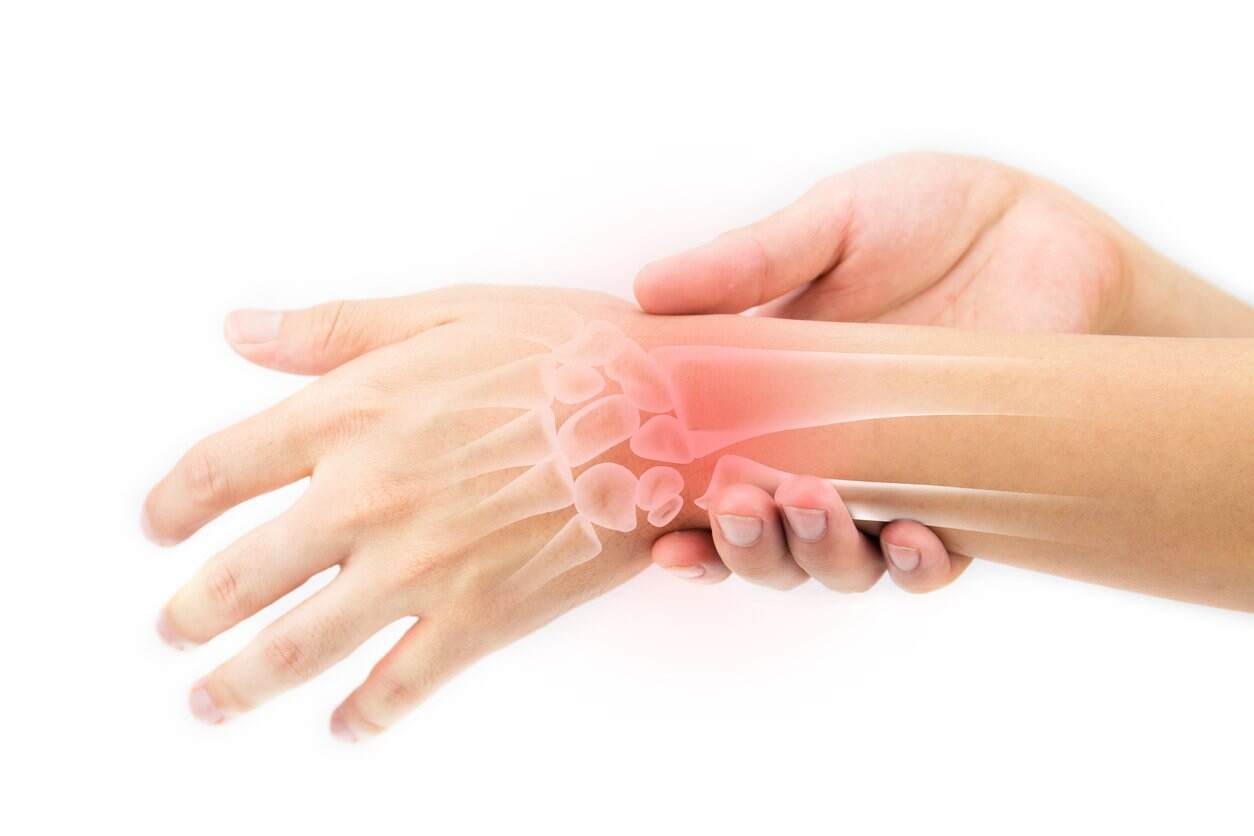WRIST PAIN TREATMENT
Wrist Pain Treatment In Hyderabad

Many problems can cause wrist pain. Carpal tunnel syndrome causes aching, numbness and weakness. Rheumatoid arthritis, gout and other forms of arthritis can make wrists tender and swollen. Splints, pain relievers and rest can alleviate wrist pain. If you have chronic pain, you may need surgery.
Your wrist is a joint that connects your hand and forearm. Your wrist joint contains many small bones that help you bend, straighten and rotate your hand and wrist. Many treatable problems can cause pain, numbness or tingling in the wrists and hands.
Causes :
If you have wrist pain after a fall, an X-ray may show that you have a fracture, sprain or partial ligament disruption, but sometimes mysterious aches and pains appear. These symptoms may come and go, get worse throughout the day or never seem to go away. Finding the cause of chronic wrist pain can be a challenge. You should see your healthcare provider who will perform a careful examination and obtain appropriate imaging studies.
You may have wrist pain due to:
► Carpal tunnel syndrome: This common hand problem causes pain, numbness, tingling and weakness in the hand and wrist. Carpal tunnel syndrome is an interval pressure phenomenon that occurs when swelling from repetitive movements or excess weight squeezes the median nerve within its canal. This nerve travels through your wrist and provides feeling and movement in your hand.
► Tendinitis: Many tendons cross your wrist to provide movement of your wrist and fingers. If they get irritated, these tendons can swell, causing pain with movement or severe spontaneous rupture. De Quervain’s tenosynovitis is one of the most common forms of tendinitis. It occurs along the thumb side of your wrist. With de Quervain’s tenosynovitis, you will have severe pain when you make movements with your thumb and wrist combined. If you experience these symptoms, see your healthcare provider for an accurate diagnosis.
► Ganglion cysts: A ganglion cyst is a non-cancerous (benign), fluid-filled lump that forms on wrist joints and tendons. A large cyst can press against nerves in your wrist, causing numbness, tingling and a dull ache. The condition is not dangerous or damaging but can cause discomfort.
► Gout: A type of arthritis, gout inflames joints, making them painful, tender and swollen. The affected joint may feel warm to the touch. Gout occurs when too much uric acid (a waste product from food digestion) builds up in your bloodstream. The excess acid causes tiny, painful crystals to form in your joints and soft tissue.
► Osteoarthritis: This form of arthritis develops when cartilage, the connective tissue that covers the ends of bones, wears down. With osteoarthritis, bone rubs against bone, causing pain, swelling and stiffness.
► Psoriatic arthritis: People with psoriasis, a skin disorder that causes thick, scaly skin patches, can get psoriatic arthritis. This arthritis causes wrist pain, tenderness and swelling. It can result in stiffness and a reduced range of motion.
► Rheumatoid arthritis: Rheumatoid arthritis (RA) is another autoimmune disease that often starts in small joints in the hands and wrists. It usually affects both hands or wrists. People with rheumatoid arthritis in their wrist may experience joint pain, swelling and stiffness.
► Lupus: Systemic lupus erythematosus is an autoimmune disease that causes your body to attack its own healthy tissue. People with lupus often develop arthritis in the small joints in their wrist and hand.
Unusual and rare sources of wrist pain include:
► Infection.
► Tumor.
► Avascular Necrosis (loss of blood supply) of a carpal bone.
► Cervical (neck) nerve compression.
Treatment of Wrist Pain :
Treatments for wrist pain vary depending on the cause. Depending on the severity, you may need a protective splint or cast for a fracture. If the fracture is unstable, you may require surgery. Wearing an extended support such as a cast, brace or splint can ease the pain brought on by a sprain, carpal tunnel syndrome or arthritis. Surgical intervention provides internal support.
For chronic, severe pain, your healthcare provider may recommend:
► Oral and/or injected medications to relieve symptoms.
► Carpal tunnel surgery to release pressure on the median nerve.
► Surgical release of compressed tendons.
► Surgery to ease bone-on-bone contact from arthritis. This can include motion-preserving procedures such as potential wrist fusion, bone removal or total or partial wrist replacement.
► Removal of the inflamed tissue (wrist debridement). Your surgeon may use an open or arthroscopic (minimally invasive) technique.
